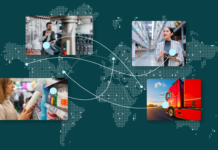Generative AI has dominated the Asia-Pacific’s (APAC) IT scene in 2023, with two-thirds of organisations in the region exploring potential use cases or already investing in generative AI technologies. While its capacity to create and streamline complex data processes is impressive, generative AI represents just a small part of AI’s vast potential. Scaling AI effectively involves optimising specific functions – a domain where specialised AI excels.
Unlike large foundational models trained on general knowledge, specialised AI focuses on distinct tasks and is trained to handle task-specific datasets – making it ideal for business applications that demand high precision and speed. As we transition from the era of AI experimentation to practical AI integration, specialised AI will hold the key to solving complex challenges and delivering true transformation.
Where specialised AI shines
Over the past few years, AI models have made significant strides in comprehending human language and engaging in conversations. Once a niche area in AI research, natural language processing (NLP) is now drawing increased attention to the business advantages of AI. One challenge in developing NLP solutions is the huge time and resource investment required in training models. There are publicly available large language models (LLMs) – such as ChatGPT-4 – that display a sophisticated understanding of human language, but the output isn’t always trustworthy. While these off-the-shelf models don’t require training, they might not be as accurate as they struggle to understand the specifics of a particular industry or real-world use case. Organisations would also need additional resources to collect data and evaluate the performance of such models.
Specialised AI has a distinct advantage over generative AI models when it comes to the training process. Organisations are able to train their own models faster and at scale, and are even able to fine-tune these models based on very specific business requirements. For instance, a combination of specialised AI and machine learning is helping organisations understand and automate business communications. Through specialised AI models, they can turn business messages across communications channels such as emails and tickets into actionable data. The capability to extract value from unstructured business communications gives organisations insight into previously hidden inefficiencies and allows them to identify opportunities for automation and improvement. For instance, leading global insurance provider Hiscox has been leveraging a communications mining solution to transform its broker services, reducing the internal response time for customer queries from days to hours.
Meanwhile, document understanding (DU) and advanced computer vision (CV) models can classify and extract data from various document formats and screen-based interactions. The capacity of specialised AI to navigate screens and documents, analyse data, and make decisions relieves human workers from repetitive, time-consuming tasks, so they can concentrate on more value-adding work. At the same time, this helps teams perform tasks with precision and reduces the risk of manual error.
Beyond screens, documents, and communication channels, specialised AI can sift through workforce insights – including from interaction data such as clicks and keystrokes – to automatically discover how employees complete certain tasks. Such insights allow organisations to refine processes and task workflows, driving operational efficiencies.
Creating new value through a synergy of generative AI and specialised AI
For all its merits, specialised AI alone is not the silver bullet to end-to-end digital transformation. To truly harness its potential, organisations must first ensure they have a solid foundation in place. This entails establishing the necessary infrastructure and systems that support the integration of AI and automation – including models that adhere to the principles of open, flexible, and responsible AI.
When necessary pre-built connectors are lacking, it becomes difficult to integrate AI-generated insights into the relevant parts of an organisation’s infrastructure and take necessary action. As a result, the full potential of AI outputs remains untapped – with organisations unable to realise the broader benefits of AI-powered automation. Moving beyond a piecemeal approach allows us to better view how the individual AI components interact with other systems in the larger mosaic of digital transformation.
Combining specialised AI and generative AI presents organisations with new opportunities for innovation, helping strike a healthy balance between creativity and efficiency. Specialised AI models can benefit from the ability of generative AI to create custom datasets for training. For instance, a specialised AI model for fraud detection can utilise data created by a generative AI model to simulate various fraud scenarios and train more robust fraud detection algorithms in the financial services industry. Generative models – which excel at natural language understanding – can also help with pre-processing and summarising text, making it more digestible for specialised AI models to perform tasks such as sentiment analysis and content curation.
Integrating generative AI, specialised AI, and automation empowers users to rapidly automate tasks using natural language, driving a ‘one-click digital transformation’ through automated actions. This approach enables organisations to harness the full potential of the AI ecosystem, creating AI-driven automations that yield actionable, measurable results. Today, users can effortlessly convert paper documents, text, and screenshots into automation-powered applications with a single click. This capability sets the stage for building robust automation workflows and interfaces, streamlining various automation processes. Innovative AI features provide essential contextual information, guiding the next best actions, whether it involves engaging with customers for service modifications, processing invoices from new operating regions, or simplifying travel expense management.
As we embrace the future of work, it is not enough to focus on merely achieving digital transformation. Holistic transformation goes beyond the surface-level adoption of technologies such as generative AI and specialised AI. It delves deep into the core of how we operate, collaborate, and innovate – putting the transformative force of AI at work through automation, seamlessly integrating intelligence into everyday operations, automating all knowledge work, and upleveling employees. It entails transforming employees into AI and automation champions and cultivating the right mindset and attitude to drive widespread awareness and implementation of new technologies. At the end of the day, the human workforce remains at the core of digital transformation and the primary driver of innovation in the new AI-driven era.
















